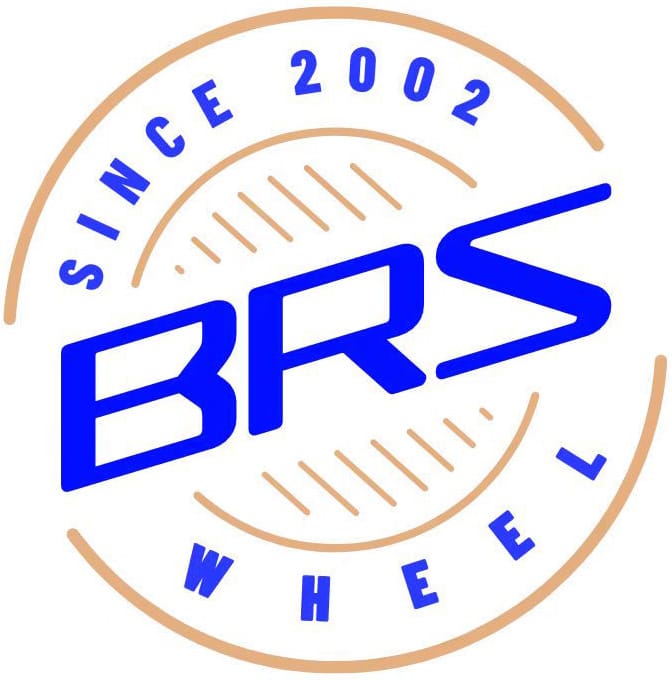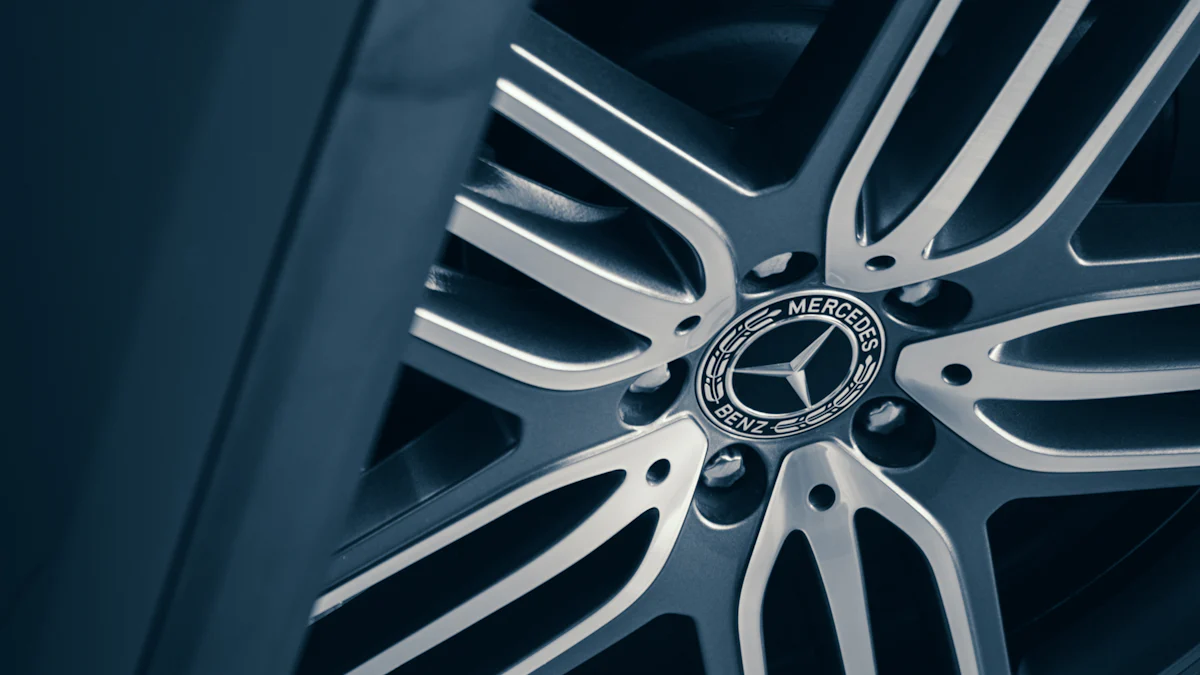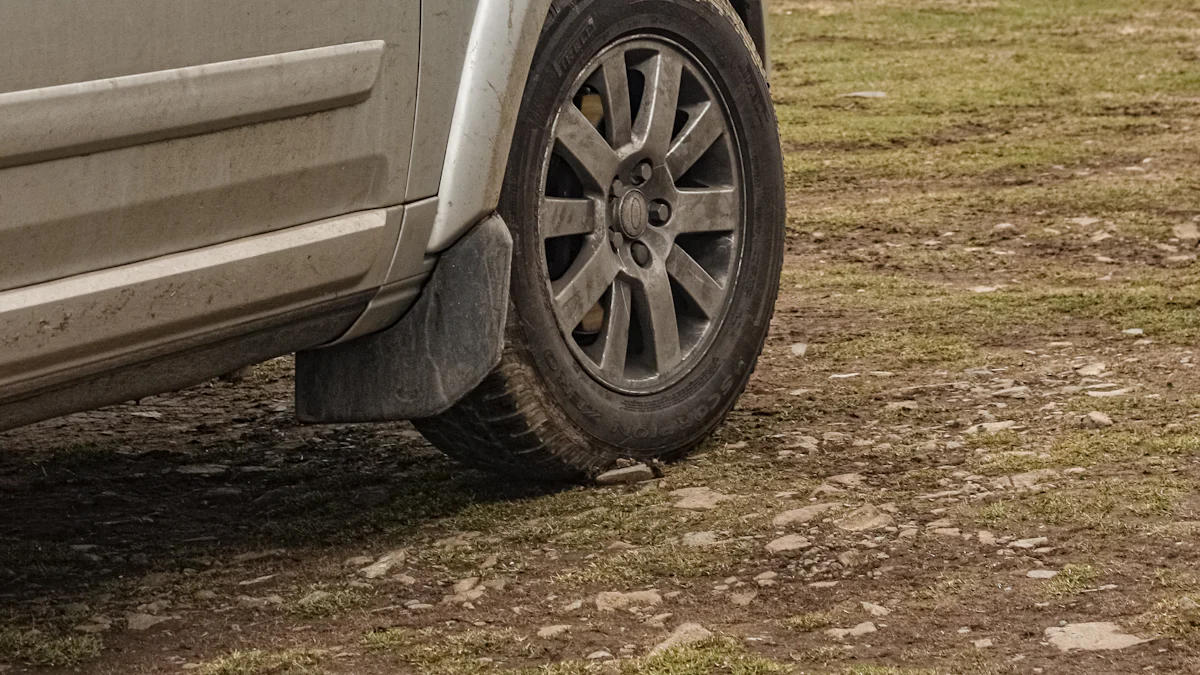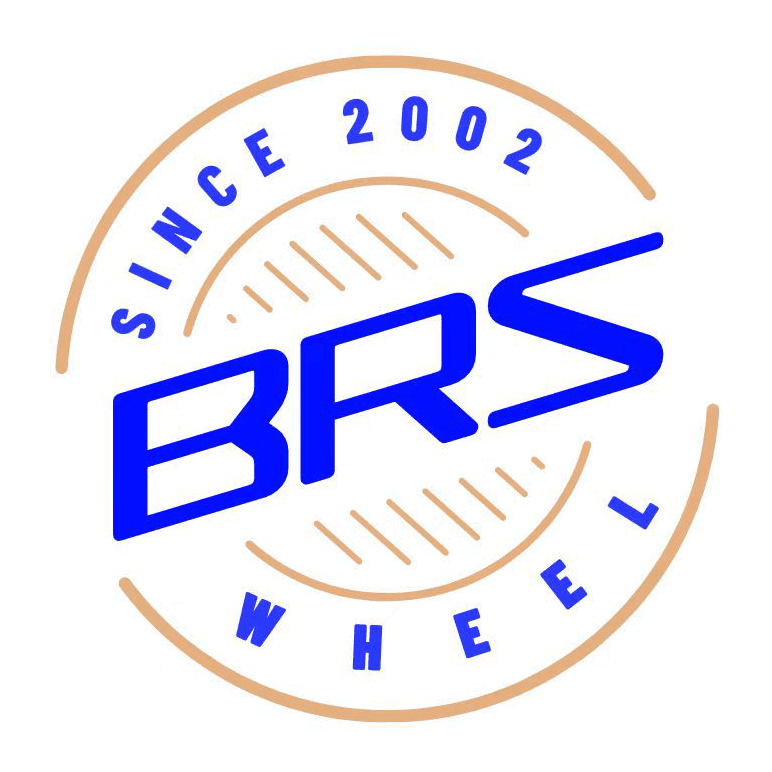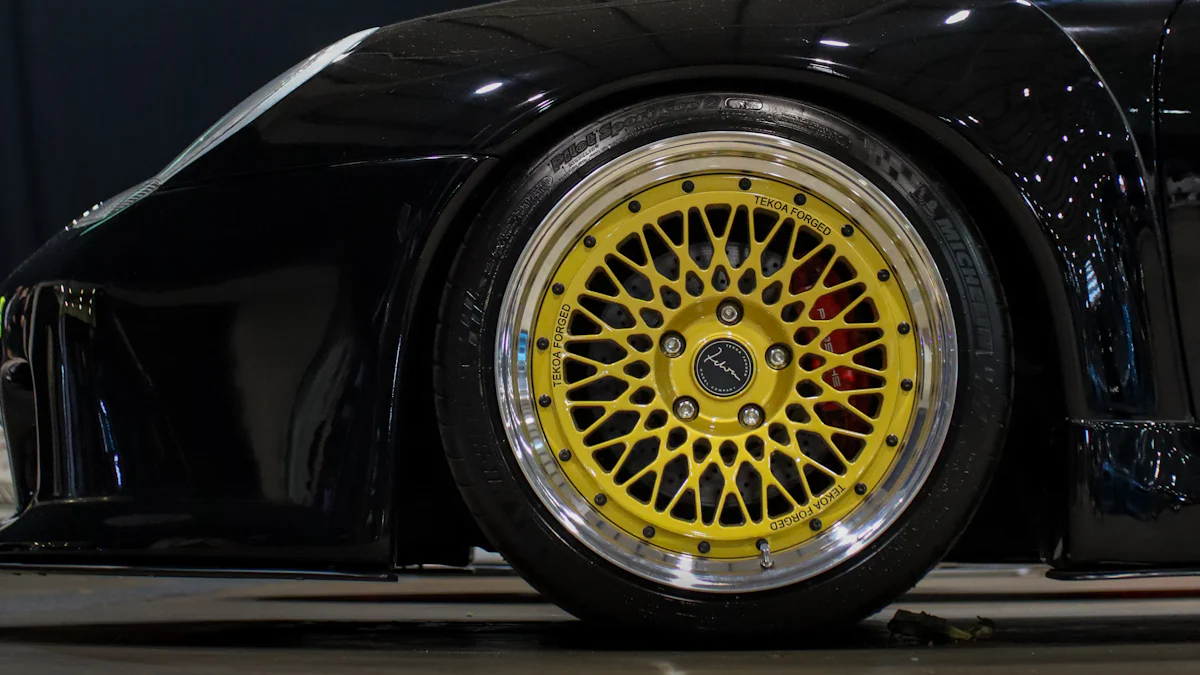
Selecting the right 17inch rim plays a vital role in transforming your vehicle’s performance, safety, and appearance. The rim size directly impacts how your car handles, rides, and looks on the road. Ensuring proper compatibility with your vehicle prevents issues like poor fitment or compromised safety. Material and design choices influence durability and style, while finish options add a personal touch. By understanding these factors, you can make a choice that enhances both functionality and aesthetics, ensuring your vehicle performs at its best.
Key Takeaways
- Ensure proper compatibility by checking your vehicle’s manual for rim size, bolt pattern, offset, and hub bore size before purchasing 17-inch rims.
Choose between aluminum alloy and steel rims based on your driving needs: aluminum for performance and style, steel for durability and cost-effectiveness. - Understand the importance of fitment factors like PCD (Pitch Circle Diameter) and offset to avoid handling issues and ensure safety.
- Select a rim design that complements your vehicle’s style, considering sporty versus classic looks and how they match your car’s color.
- Maintain your rims according to their finish type: clean painted rims with mild soap, polish polished rims regularly, and use chrome-specific cleaners for chrome finishes.
Look for certifications like DOT, JWL and VIA to ensure the rims meet safety and performance standards, providing peace of mind with your purchase. - Utilize fitment tools or consult with professionals to confirm that the rims you choose will fit your vehicle correctly, enhancing both performance and aesthetics.
Size and Compatibility
Understanding Rim Size
What does “17-inch rim” mean?
A “17-inch rim” refers to the diameter of the wheel measured from one end of the inner circle to the other. This measurement is crucial because it determines the size of the tire that fits the rim. The 17-inch specification ensures compatibility with tires designed for this diameter, which are widely available in the market. Many modern vehicles, including trucks and SUVs, use 17-inch rims due to their balance of performance and comfort. These rims provide a softer ride compared to larger wheels, thanks to their ability to accommodate tires with a larger sidewall.
How to match rim size with tire size
Matching the rim size with the correct tire size is essential for maintaining your vehicle’s performance and safety. Start by checking the tire’s sidewall markings, which display the dimensions in a format like “225/45R17.” The “17” in this example indicates the tire is designed for a 17-inch rim. Ensure the width and aspect ratio of the tire align with your vehicle’s specifications. Using mismatched sizes can lead to issues like poor handling, uneven wear, or even damage to the rim or tire. Always consult your vehicle’s manual or a professional to confirm matching the rim size.
Ensuring Compatibility with Your Vehicle
Checking wheel well dimensions and hub bore size
Before purchasing a 17-inch rim, verify that it fits within your vehicle’s wheel well. Measure the available space to ensure the rim and tire won’t rub against the suspension or fenders. Additionally, check the hub bore size, which is the hole in the center of the rim that fits over the hub of your vehicle. A hub bore that’s too small will prevent the rim from sitting flush, compromising safety and performance. Most manufacturers provide this information in the vehicle’s specifications or manual.
Using your vehicle’s manual or manufacturer specifications
Your vehicle’s manual is an invaluable resource when selecting rims. It provides detailed information about the recommended rim size, bolt pattern, offset, and other critical specifications. Following these guidelines ensures the rim fits perfectly and performs optimally. If you can’t locate the manual, contact the manufacturer or visit their website for accurate details. Consulting with a professional mechanic or tire expert can also help you make an informed decision.
Fitment
Key Fitment Factors
What is PCD (Pitch Circle Diameter)?
PCD, or Pitch Circle Diameter, refers to the diameter of an imaginary circle that passes through the center of all the bolt holes on a rim. This measurement is critical because it determines whether the rim will align properly with your vehicle’s hub. For example, if your car has a PCD of 5×114.3, this means there are five bolt holes arranged in a circle with a diameter of 114.3 millimeters. Always ensure the PCD of the 17inch rim matches your vehicle’s specifications to avoid improper fitment.
Understanding offset and its impact on performance
Offset measures the distance between the rim’s mounting surface and its centerline. It can be positive, negative, or zero. A positive offset means the mounting surface is closer to the front of the rim, while a negative offset places it closer to the back. The offset affects how the rim sits in relation to the wheel well. A proper offset ensures the rim doesn’t rub against the suspension or fenders. Incorrect offset can lead to handling issues or uneven tire wear. Check your vehicle’s manual for the recommended offset range to maintain optimal performance.
Bolt patterns and how to measure them
The bolt pattern describes the number of bolt holes and the diameter of the circle they form. For instance, a 5×100 bolt pattern means the rim has five bolt holes arranged in a 100-millimeter circle. To measure the bolt pattern, count the number of bolt holes and measure the distance between two opposite holes (for even numbers) or from one hole to the center of the circle (for odd numbers). Matching the bolt pattern ensures the rim securely attaches to your vehicle, preventing safety risks.
How to Test Fitment
Using fitment tools or guides
Fitment tools or guides simplify the process of checking whether a rim will fit your vehicle. Online tools allow you to input your car’s make, model, and year to find compatible rims. Physical tools, like a fitment template, help you test the rim directly on your vehicle. These tools save time and reduce the risk of purchasing an incompatible rim. Always double-check the results with your vehicle’s specifications for accuracy.
Consulting with a professional mechanic or tire expert
A professional mechanic or tire expert provides valuable insights when testing rim fitment. They have the expertise to measure dimensions like PCD, offset, and hub bore size accurately. They can also identify potential issues, such as clearance problems or mismatched specifications, that might not be obvious. Consulting an expert ensures you choose a rim that fits perfectly and performs reliably.
Material and Construction
Types of Rim Materials
Aluminum alloy vs. steel rims
When choosing a rim material, you will often encounter two main options: aluminum alloy and steel. Each has unique characteristics that cater to different needs.
- Steel rims are known for their durability and affordability. They can withstand harsh conditions, making them ideal for off-road driving or winter use. However, steel rims are heavier, which can slightly reduce fuel efficiency and handling performance.
- Aluminum alloy rims, on the other hand, are lighter and more stylish. Their reduced weight improves acceleration, braking, and overall handling. These rims also resist rust better than steel, which enhances their longevity in various climates. However, they tend to be more expensive and less durable under extreme conditions.
Your choice between these materials depends on your driving habits, budget, and aesthetic preferences. If you prioritize strength and cost-effectiveness, steel rims may suit you better. If performance and style matter more, aluminum alloy rims are the way to go.
Pros and cons of lightweight materials
Lightweight materials, such as aluminum alloys, offer several advantages. They reduce the overall weight of your vehicle, which improves fuel efficiency and enhances handling. This weight reduction also minimizes wear on suspension components, extending their lifespan. Additionally, lightweight rims contribute to better acceleration and braking performance, making them a favorite among performance enthusiasts.
However, lightweight materials come with some drawbacks. They are generally more expensive than heavier options like steel. In extreme driving conditions, such as off-road trails or heavy snow, lightweight rims may not provide the same level of durability as steel rims. Consider your driving environment and priorities before opting for lightweight materials.
Manufacturing Processes
Cast rims: Affordable and versatile
Cast rims are made by pouring molten aluminum into a mold, allowing it to cool and solidify. This process is cost-effective, making cast rims one of the most affordable options on the market. They are versatile and available in a wide range of designs, catering to various aesthetic preferences. While cast rims are strong enough for everyday use, they are less durable than forged rims and may crack under extreme stress.
Forged rims: Durable and high-performance
Forged rims are crafted by applying intense heat and pressure to a solid piece of aluminum. This process creates a denser, stronger material with an exceptional strength-to-weight ratio. Forged rims are lighter than cast rims, which enhances handling, acceleration, and braking. Their durability makes them a top choice for performance and racing enthusiasts. However, the advanced manufacturing process makes forged rims significantly more expensive than other options.
“Forged wheels offer significant improvements in handling, acceleration, and deceleration due to their unparalleled strength-to-weight ratio.” – RNR Tires
Flow-formed rims: A balance of strength and cost
Flow-formed rims combine elements of casting and forging. The process begins with a cast rim, which is then heated and spun while rollers apply pressure to shape the outer rim. This technique strengthens the material, creating a product that is lighter and more durable than traditional cast rims. Flow-formed rims strike a balance between strength and affordability, making them an excellent choice for drivers seeking performance without breaking the bank.
By understanding the differences in materials and manufacturing processes, you can select a 17inch rim that aligns with your needs, whether you prioritize durability, performance, or cost-effectiveness.
Design and Style
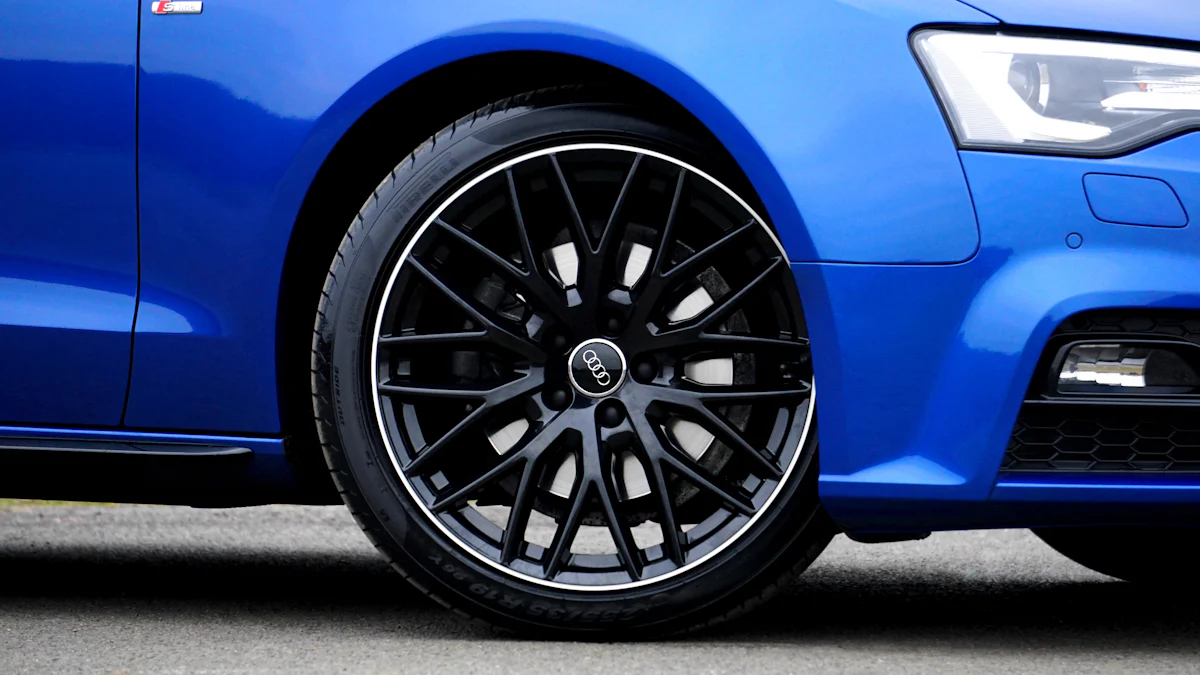
Popular Rim Designs
Multi-spoke vs. split-spoke designs
Multi-spoke rims feature a higher number of spokes, typically ranging from 7 to 15 or more. This design creates a sleek and intricate appearance, making it a popular choice for both sporty and luxury vehicles. The versatility of multi-spoke rims allows for variations in spoke length, curvature, and spacing, giving you endless options to match your vehicle’s personality. These rims strike a balance between modern aesthetics and timeless appeal, making them a go-to option for drivers who want a sophisticated look.
Split-spoke designs, on the other hand, divide each spoke into two branches, creating a dynamic and bold visual effect. This style often conveys a sporty and aggressive vibe, making it ideal for performance-oriented vehicles. Split-spoke rims not only enhance the aesthetics but also reduce weight compared to traditional designs, which can improve handling and acceleration. If you want your car to exude energy and power, split-spoke rims are an excellent choice.
Mesh patterns and their appeal
Mesh rims feature a web-like pattern of intersecting spokes, creating a complex and eye-catching design. This style has gained popularity for its ability to blend elegance with a sporty edge. The intricate patterns of mesh rims add depth and texture to your vehicle’s appearance, making them a favorite among car enthusiasts. These rims often come in various finishes, such as chrome or matte, allowing you to customize the look further.
Mesh rims also offer practical benefits. The open design improves airflow to the brakes, helping to maintain optimal performance during high-speed driving. If you value both aesthetics and functionality, mesh rims provide a perfect combination.
Choosing a Style That Matches Your Vehicle
Sporty vs. classic designs
Sporty vs. classic designs focus on timeless elegance.
Classic designs, like traditional multi-spoke or simple five-spoke rims, focus on timeless elegance. These styles complement a wide range of vehicles, from sedans to vintage cars, and never go out of fashion. Classic rims often feature polished or painted finishes, adding a touch of sophistication to your vehicle. If you prefer a refined and understated look, classic designs are a reliable choice.
How to complement your car’s color and body style
Matching your rims to your car’s color and body style enhances its overall appearance. For example, chrome or polished rims pair well with darker-colored vehicles, creating a striking contrast. Matte black rims, on the other hand, suit lighter-colored cars, adding a bold and modern touch. If your car has a vibrant color, consider rims with a painted finish that matches or complements the hue.
The body style of your vehicle also plays a role in rim selection. Sleek and sporty cars benefit from aggressive designs like split-spoke or concave rims, while larger vehicles, such as SUVs, look great with multi-spoke or mesh patterns. Always choose a rim style that aligns with your car’s proportions and design language to achieve a cohesive and attractive look.
Finish Options
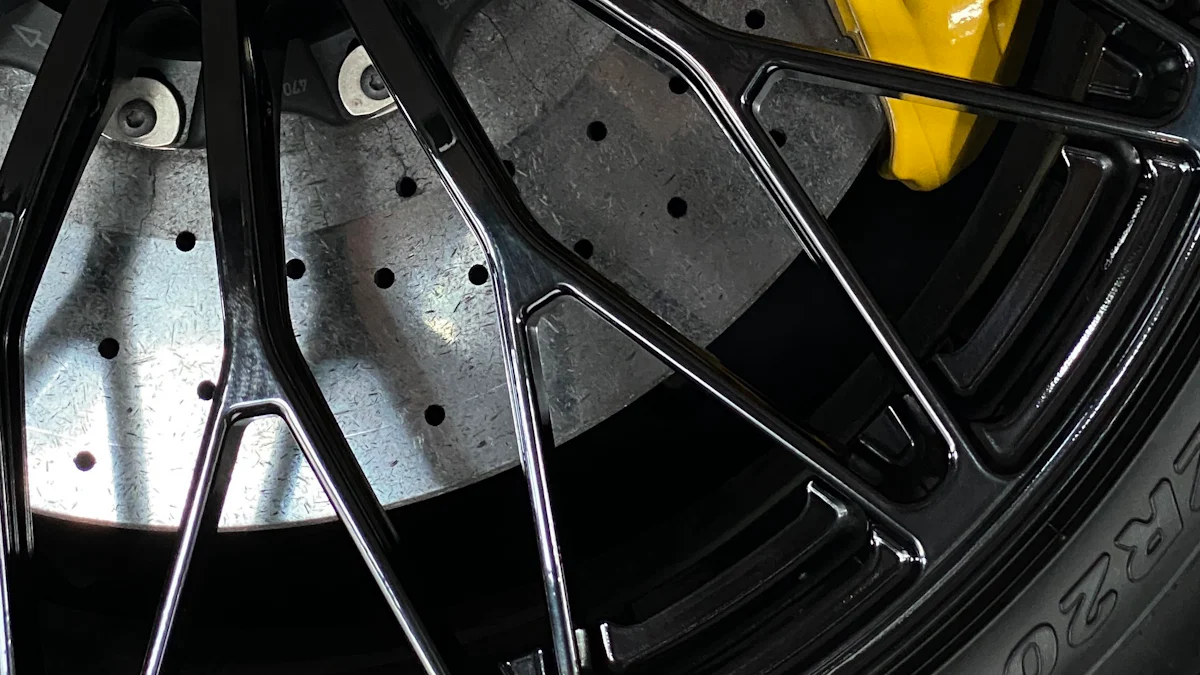
Types of Rim Finishes
Painted finishes: Durable and customizable
Painted finishes offer a versatile and durable option for your rims. These finishes come in a variety of colors and textures, allowing you to customize the look of your vehicle. Whether you prefer a glossy, matte, or satin appearance, painted finishes provide endless possibilities to match your style.
Polished finishes: Sleek and reflective
Polished finishes deliver a sleek and shiny appearance that enhances the overall look of your vehicle. The surface of the rim is buffed to a high gloss, creating a mirror-like effect that reflects light beautifully. This finish is ideal if you want your car to stand out with a luxurious and modern aesthetic. However, polished rims require regular cleaning to maintain their shine. Dirt, grime, and brake dust can dull the surface over time, so consistent upkeep is essential to preserve their reflective quality.
Chrome finishes: High shine and luxury appeal
Chrome finishes are synonymous with luxury and elegance. These rims feature a highly reflective, mirror-like surface that adds a premium touch to any vehicle. Chrome rims are perfect for those who want to make a bold statement on the road. While they offer unmatched visual appeal, chrome finishes demand careful maintenance. They are prone to pitting and corrosion if exposed to harsh weather or road salt. Regular cleaning and protective coatings can help maintain their pristine appearance.
Maintenance and Durability of Finishes
How to care for different finishes
Proper care ensures your rims retain their appearance and performance. Each finish type has specific maintenance requirements:
- Painted finishes: Clean painted rims with mild soap and water to remove dirt and brake dust. Avoid abrasive cleaners or brushes that could damage the paint. Applying a protective wax coating can enhance durability and shine.
- Polished finishes: Use a non-abrasive polish to restore the shine of polished rims. Clean them frequently to prevent dirt buildup, which can dull the surface. A microfiber cloth works best for buffing without causing scratches.
- Chrome finishes: Wash chrome rims regularly to remove road salt and grime. Apply a chrome-specific cleaner and polish to maintain their reflective surface. Protective coatings can help prevent pitting and corrosion.
By following these steps, you can extend the lifespan of your rims and keep them looking their best.
Which finishes are best for harsh weather conditions?
If you frequently drive in harsh weather, choosing the right rim finish is crucial. Painted finishes are the most resilient option for extreme conditions. The paint layer acts as a shield, protecting the rim from rust, corrosion, and road salt. Matte painted rims, in particular, hide scratches and dirt effectively, making them ideal for winter or off-road use.
Polished and chrome finishes, while visually stunning, require extra care in harsh environments. Polished rims can lose their shine if exposed to excessive moisture or dirt. Chrome rims are more susceptible to corrosion, especially in areas with heavy snowfall or salted roads. If you opt for these finishes, ensure you clean and protect them regularly to prevent damage.
For durability and ease of maintenance, painted finishes remain the top choice for challenging weather conditions.
Quality Standards
Certifications to Look For
DOT (Department of Transportation) approval
When selecting rims, you should always check for the DOT (Department of Transportation) approval. This certification ensures that the rims meet the quality standards of the Federal Motor Vehicle Safety Standards (FMVSS) in the United States.
JWL and VIA certifications for safety and performance
For rims designed for passenger cars, the JWL (Japan Light Alloy Wheel) certification is a critical indicator of quality. This certification confirms that the rims meet strict Japanese safety and performance standards. You can find the JWL mark on rims that have passed tests for durability, load capacity, and impact resistance.
If you are considering rims for trucks or larger vehicles, look for the JWL-T certification. This mark signifies that the rims meet or exceed the safety standards set by Japan’s Ministry of Land, Infrastructure, Transport, and Tourism (MLIT). Additionally, the VIA (Vehicle Inspection Association) certification further validates the rim’s quality. VIA-certified rims undergo independent testing to ensure they meet high-performance benchmarks. By choosing rims with JWL, JWL-T, or VIA certifications, you can trust their reliability and durability.
How to Identify High-Quality Rims
Signs of poor-quality rims to avoid
Spotting poor-quality rims can save you from potential safety hazards and costly repairs. Low-quality rims often exhibit visible flaws, such as uneven finishes, rough edges, or poorly aligned bolt holes. These imperfections indicate substandard manufacturing processes. Additionally, rims made from inferior materials may feel excessively lightweight or flimsy, compromising their strength and durability.
Another red flag is the absence of certifications like DOT, JWL, or VIA. Rims without these marks may not meet essential safety standards. Be cautious of rims sold at unusually low prices, as they might be counterfeit or made from low-grade materials. Always inspect the rim’s construction and markings to ensure it meets quality expectations.
Importance of buying from reputable brands or retailers
Purchasing rims from reputable brands or trusted retailers ensures you receive a high-quality product.
Reputable retailers also offer expert guidance to help you select the right rims for your vehicle. They provide detailed product information, including certifications and specifications, ensuring transparency. Avoid purchasing rims from unknown or unverified sources, as they may sell counterfeit or unsafe products. By choosing trusted brands and retailers, you can enhance your vehicle’s safety, performance, and appearance.
FAQs
1. What are the benefits of choosing 17-inch rims for my vehicle?
17-inch rims strike a balance between performance, comfort, and aesthetics. They provide a smoother ride compared to larger rims because they allow for tires with a taller sidewall. This added sidewall absorbs road imperfections better, enhancing comfort. Additionally, 17-inch rims improve handling and braking performance for many vehicles. Their size also accommodates a wide range of tire options, making them versatile for different driving needs. From a design perspective, they offer a stylish upgrade without compromising functionality.
2. How do I know if 17-inch rims will fit my car?
To ensure proper fitment, check your vehicle’s manual or manufacturer specifications. Look for details on rim size, bolt pattern, offset, and hub bore size. These measurements must match the specifications of the 17-inch rims you plan to purchase. You can also use online fitment tools by entering your car’s make, model, and year. For added assurance, consult a professional mechanic or tire expert who can verify compatibility and test fitment.
3. Are steel rims better than aluminum alloy rims?
The choice between steel and aluminum alloy rims depends on your priorities. Steel rims are durable, cost-effective, and ideal for harsh conditions like winter driving or off-road use. However, they are heavier, which can slightly reduce fuel efficiency and handling. Aluminum alloy rims, on the other hand, are lightweight and stylish. They enhance acceleration, braking, and overall handling. If you value performance and aesthetics, aluminum alloy rims are a better choice. For strength and affordability, steel rims are more suitable.
4. What is the difference between offset and PCD?
Offset and PCD (Pitch Circle Diameter) are two critical measurements for rim fitment. Offset refers to the distance between the rim’s mounting surface and its centerline. It determines how the rim sits in relation to the wheel well. A proper offset ensures the rim doesn’t rub against the suspension or fenders. PCD, on the other hand, measures the diameter of an imaginary circle passing through the center of all bolt holes. It ensures the rim aligns with your vehicle’s hub. Both measurements must match your car’s specifications for a secure and functional fit.
5. How do I maintain the finish of my rims?
Proper maintenance keeps your rims looking great and performing well. For painted finishes, clean them with mild soap and water to remove dirt and brake dust. Avoid abrasive cleaners that could damage the paint. Polished rims require regular cleaning and non-abrasive polish to maintain their shine. Chrome rims need extra care to prevent pitting and corrosion. Wash them frequently and apply a chrome-specific cleaner. For all finishes, use a microfiber cloth to avoid scratches and consider applying protective coatings for added durability.
6. Can I use 17-inch rims for off-road driving?
You can use 17-inch rims for off-road driving, but the choice of material and tire type matters. Steel rims are better suited for off-road conditions due to their durability and resistance to damage. Pair them with tires designed for rugged terrain to ensure optimal performance. Keep in mind that 17-inch rims may have less sidewall compared to smaller rims, which could impact off-road performance. If off-roading is a priority, consult an expert to select the best combination of rims and tires for your needs.
7. Why are certifications like DOT, JWL, and VIA important?
Certifications like DOT, JWL, and VIA ensure that rims meet strict safety and performance standards. The DOT certification confirms compliance with U.S. Federal Motor Vehicle Safety Standards. JWL certification guarantees that rims meet Japanese safety benchmarks for passenger cars. VIA certification involves independent testing to validate the rim’s quality and durability. Choosing certified rims ensures reliability, safety, and long-term performance. Always look for these marks when purchasing rims to avoid low-quality or unsafe products.
8. How do I choose a rim design that matches my car?
To select a rim design that complements your car, consider its body style and color. Sporty vehicles pair well with aggressive designs like split-spoke or concave rims. Classic cars look best with traditional multi-spoke or five-spoke rims. For color matching, chrome or polished rims create contrast with darker vehicles, while matte black rims suit lighter cars. Always choose a design that aligns with your car’s proportions and enhances its overall appearance.
9. Are lightweight rims worth the investment?
Lightweight rims, such as those made from aluminum alloys or forged materials, offer several advantages. They improve acceleration, braking, and handling by reducing the vehicle’s unsprung weight. This reduction also minimizes wear on suspension components, extending their lifespan. However, lightweight rims are more expensive and may not be as durable under extreme conditions. If you prioritize performance and drive on smooth roads, lightweight rims are a worthwhile investment. For rugged or off-road use, heavier rims like steel may be a better option.
10. Where can I buy high-quality 17-inch rims?
You can purchase high-quality 17-inch rims from reputable brands or trusted retailers. Look for manufacturers with certifications like DOT, JWL, or VIA to ensure safety and performance. Brands like Ningbo BRS Auto Parts Co., Ltd. offer certified steel wheels with advanced manufacturing processes and rigorous quality standards. Avoid unknown or unverified sellers, as they may sell counterfeit or low-quality products. Always research the brand and retailer before making a purchase to ensure you receive a reliable product.
Choosing the best 17-inch rim requires a clear understanding of size compatibility, fitment, material, design, finish, and quality standards. You should always prioritize safety and performance when making your selection. Refer to your vehicle’s specifications or consult a professional to ensure the right fit. High-quality rims not only enhance your car’s appearance but also provide long-term durability and reliability. Trusted manufacturers like Ningbo BRS Auto Parts Co., Ltd. offer certified steel wheels with advanced manufacturing processes, ensuring you get a product that meets rigorous quality standards.
FAQ
1. What are the differences between rim types and finishes?
Rims come in various types and finishes, each offering unique benefits. Common rim types include multi-spoke, mesh, deep dish, and concave designs. Multi-spoke rims provide a sleek and intricate look, while mesh rims add a sporty and dynamic touch. Deep dish rims create a bold, aggressive appearance, and concave rims emphasize depth and modernity.
When it comes to materials, rims are typically made from alloy or steel. Alloy rims are lightweight and enhance performance, but they require more maintenance to keep their appearance intact. Steel rims, on the other hand, are heavier but offer superior durability, making them ideal for harsh conditions.
Finishes also play a significant role in the rim’s appearance and maintenance. Painted finishes are customizable and durable, polished finishes provide a reflective shine, and chrome finishes exude luxury but demand regular care. Choosing the right combination of type and finish depends on your vehicle’s style and your maintenance preferences.
2. How does rim weight affect fuel efficiency and performance?
The weight of your rims directly impacts your vehicle’s fuel efficiency and performance. Lighter rims, such as those made from aluminum alloy, reduce the overall weight of your car. This reduction improves acceleration, braking, and handling. It also enhances fuel economy by requiring less energy to move the vehicle.
Heavier rims, like steel ones, may decrease fuel efficiency and slow down acceleration. However, they provide added strength and durability, which is beneficial for off-road or winter driving. If you prioritize performance and fuel savings, lightweight rims are the better choice. For rugged conditions, heavier rims offer reliability and toughness.
3. Can I switch between alloy and steel rims?
Yes, you can switch between alloy and steel rims, but you should consider your driving needs and conditions. Alloy rims are ideal for everyday driving and performance-focused vehicles. They improve handling and add a stylish touch to your car. Steel rims are better suited for rough terrains or winter use due to their durability and resistance to damage.
Before making the switch, ensure the new rims match your vehicle’s specifications, including size, bolt pattern, and offset. Consulting a professional mechanic can help you make the right choice and avoid compatibility issues.
4. What is the importance of rim certifications like DOT, JWL, and VIA?
Rim certifications ensure safety and quality. The DOT (Department of Transportation) certification confirms that the rims meet U.S. safety standards. JWL (Japan Light Alloy Wheel) certification guarantees compliance with Japanese safety benchmarks, while VIA (Vehicle Inspection Association) certification involves independent testing for performance and durability.
These certifications indicate that the rims have undergone rigorous testing for load capacity, impact resistance, and structural integrity. Always look for these marks when purchasing rims to ensure reliability and long-term performance.
5. How do I maintain my rims to keep them looking new?
Proper maintenance keeps your rims in excellent condition. Follow these tips based on the rim finish:
- Painted rims: Clean with mild soap and water to remove dirt and brake dust. Avoid abrasive cleaners that could damage the paint.
- Polished rims: Use a non-abrasive polish to restore their shine. Regular cleaning prevents dirt buildup that dulls the surface.
- Chrome rims: Wash frequently to remove road salt and grime. Apply a chrome-specific cleaner and protective coating to prevent corrosion.
Using a microfiber cloth for cleaning minimizes scratches. Regular maintenance not only preserves the appearance but also extends the lifespan of your rims.
6. Are 17-inch rims suitable for all vehicles?
Not all vehicles can accommodate 17-inch rims. You must check your vehicle’s specifications to ensure compatibility. Refer to your owner’s manual for details on rim size, bolt pattern, offset, and hub bore size. These measurements must align with the 17-inch rims you plan to purchase.
If you’re unsure, use online fitment tools or consult a professional mechanic. Proper fitment ensures safety, optimal performance, and a seamless appearance.
7. What are the benefits of choosing 17-inch rims?
17-inch rims offer a balance of performance, comfort, and style. They allow for tires with a taller sidewall, which absorbs road imperfections and provides a smoother ride. These rims also improve handling and braking for many vehicles, making them a versatile choice.
From a design perspective, 17-inch rims enhance your car’s appearance without compromising functionality. They are widely available and compatible with a range of tire options, making them a practical and stylish upgrade.
8. How do I choose a rim design that matches my vehicle?
To select a rim design that complements your vehicle, consider its body style and color. Sporty cars pair well with aggressive designs like split-spoke or concave rims. Classic cars look best with traditional multi-spoke or five-spoke rims.
For color matching, chrome or polished rims create contrast with darker vehicles, while matte black rims suit lighter cars. Always choose a design that aligns with your car’s proportions and enhances its overall appearance.
9. Are lightweight rims worth the investment?
Lightweight rims, such as those made from aluminum alloys or forged materials, offer several advantages. They improve acceleration, braking, and handling by reducing the vehicle’s unsprung weight. This reduction also minimizes wear on suspension components, extending their lifespan.
However, lightweight rims are more expensive and may not be as durable under extreme conditions. If you prioritize performance and drive on smooth roads, lightweight rims are a worthwhile investment. For rugged or off-road use, heavier rims like steel may be a better option.
10. Where can I buy high-quality 17-inch rims?
You can purchase high-quality 17-inch rims from reputable brands or trusted retailers. Look for manufacturers with certifications like DOT, JWL, or VIA to ensure safety and performance. Brands like Ningbo BRS Auto Parts Co., Ltd. offer certified steel wheels with advanced manufacturing processes and rigorous quality standards.
Avoid unknown or unverified sellers, as they may sell counterfeit or low-quality products. Research the brand and retailer before making a purchase to ensure you receive a reliable product.
- Posted In:General
